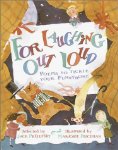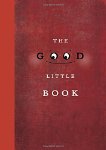When I was a child my Aunt D used to tell me stories about the childhood that she and my father shared in India. I love those stories because they helped me better understand who my father was and why he grew up to become such a thoughtful, bookish man who was fascinated by people.
In today's poetry title you will meet a little girl who gets to know her mother better by reading a collection of poems that her mother wrote when she was a child. The litter girl finds out about the adventures that her mother, had and about the challenges that she faced. The free verse and Japanese tanka poems that cover the pages in this book give readers the opportunity to shift between the child of the present and the child of the past.
 Poems in the Attic
Poems in the Attic
In today's poetry title you will meet a little girl who gets to know her mother better by reading a collection of poems that her mother wrote when she was a child. The litter girl finds out about the adventures that her mother, had and about the challenges that she faced. The free verse and Japanese tanka poems that cover the pages in this book give readers the opportunity to shift between the child of the present and the child of the past.
 Poems in the Attic
Poems in the Attic
Nikki Grimes
Illustrations by Elizabeth Zunon
Poetry Picture Book
For ages
Lee and Low, 2015, 978-1-62014-027-7
One day a seven-year-old girl goes into the attic in her
grandmother’s house to explore. She finds a cedar box full of poems that her
mother wrote when she was seven years old. As the daughter of a military man, Mama
moved around a lot, and she had many memorable experiences. Now her daughter
can read about these experiences in her mother’s poems.
She reads about
how her mama, when she lived in California, went to the beach with her father
to see the Grunion Run. Together Mama and her father saw “slim fish, silver as
new dimes” wriggling onto the beach where they laid their eggs.
She reads about
how Mama and Grandma made paper bag luminaries when they lived in Mexico, and
how they used the bags, with their “scalloped” tops and happy painted faces, to
decorate the path leading up to their adobe home. Grandma even teaches the
little girl the “kind of magic she and Mama used to make / every December, in
New Mexico.” Through their craft activity they have a wonderful time together
connecting with the past.
Looking through
a photo album the little girl see a picture of her mother with a snowman “that
stands taller than she.” The child also reads her mother’s poem, in which Mama describes
how she used the skies her father gave her to shuffle around her back yard in
the snow. In her dreams she was “flying downhill.”
Often Mama’s
father was away from the family for months, and when they lived in Colorado
Mama had to bring a photo of her father to school for Bring Your Dad Day
because he was away. The little girl is sure that Mama must have missed her father
very much during those long separations.
When she reads
her mother’s poem describing how she and her family members went canoeing when
they lived in Virginia, the little girl understands why her mother has so many
pictures of kayaks and canoes on their walls at home.
In this
remarkable book every spread gives readers a free verse poem that captures the
little girl’s feelings as she gets to know her mother through her poems. On the
facing page readers will find her mother’s poems. The mother’s poems are written
in the Japanese tanka format, which use five lines. There are five syllables in
the first and third lines, and seven syllables in the second, fourth, and fifth
lines.
It is
fascinating to see how Nikki Grimes uses poems to tell a story that is powerful
and poignant, and that celebrates the connection that a child shares with her
mother; a connection that reaches back into the past.







